1. Old Engels (700-1066)
1.1. Characteristics
1.1.1. Literature
1.1.1.1. mainly poetry
1.1.1.2. oral character
1.1.1.3. no end rhyme
1.1.1.4. alliteration and assonace (kennings)
1.1.2. Language
1.1.2.1. Phonetic spelling
1.1.2.2. Free word order, inflexional endings
1.1.2.3. Mixture of Roman letters and runes
1.2. Beowulf
1.2.1. Summary
1.2.1.1. monster terrorizes Heorot
1.2.1.2. Hygelac (KIng) tells Beowulf about monster
1.2.1.3. Beowulf and men are attacked and defest Grendel. And then Grendels mother, who wanted revenge.
1.2.1.4. Beowulf becomes king
1.2.1.5. Dragon gets mad, slave steals a golden cup. Beowulf dies, Wiglaf defeat dragon. Beowulf is burried with dragon.
1.2.2. Characteristics
1.2.2.1. Old english: pagan and christian
1.2.2.2. hero dies, bravery
1.2.2.3. loyalty unto death
2. Renaissance
2.1. Changes
2.1.1. from collective to individual attitude
2.1.2. from theocentric to antropocentric outlook
2.1.3. dogmatic belive to critical investigation
2.2. characteristics literature
2.2.1. individual importance reflected
2.2.2. lyrical poetry (sonnets, love poerty drama). express personal feelings
2.3. Elizabethan theatres
2.3.1. no place to perform plays
2.3.2. play in open air, no light effects, bockground and with simple props
2.3.3. stage in middle of audience
2.3.4. language important, makes the atmosphere and noamplifiers
2.3.5. only men were actors
2.4. Dr. Faustus
2.4.1. smart man, wants more knowledge
2.4.2. makes deal with the devil
2.4.3. 24 years unlimited know, for soul
2.4.4. blankverse: no rhyme, iambic pentameter
2.4.5. tragedy: man causes own downfall
2.5. Henry VIII
2.5.1. married 6 times
2.5.2. Catharine of Aragon
2.5.2.1. married henrys brother, but he died
2.5.2.2. got a daughter
2.5.2.3. wanted a divorce, problematic
2.5.3. Anne Boleyin
2.5.3.1. give birth to a girl
2.5.3.2. beheade for treasons
2.5.4. Jane Seymour & Anne of Cleves
2.5.4.1. jane died after giving birth to son. Anne was ulier than expected so divorced
2.5.5. Catherine Howard & Catherine Parr
2.5.5.1. Catherine H beheade for adultery, Catherine P survived
2.5.6. created his own church because he had an argue with clergy because all his marriages
3. Middle English (1066-1500)
3.1. History
3.1.1. War of roses
3.1.2. Battle of Hastings
3.1.2.1. King edward dies, no heir
3.1.2.2. Battle between Harold Godwinson (Powerful English nobleman) and William (claims to be appointed)
3.1.2.3. William wins and becomes king
3.1.3. Perios of Frenchification
3.2. Characteristics
3.2.1. Language
3.2.1.1. Many French words
3.2.1.2. pronouns and prepositions introduced, no more inflectional endings
3.2.1.3. runes replaced for alphabet
3.2.1.4. spelling no longer phonetical
3.2.1.5. great vowel shift, printing press
3.2.1.6. French: court, upper class. Latin: church and science. English: common people
3.2.2. Literature
3.2.2.1. Form: alliteration and assonance become end rhyme and metrum
3.2.2.2. Genre: Epic (war, death, glory) becomes courtly love and romance.
3.2.2.2.1. Courtly love: woman (afstandelijk en kuis) is idiolized by humble, courages and strong knight
3.2.2.2.2. Romance: Couteous and courageous knight fights to impress beautiful lady. Miraculous and supernatural elements
3.3. Canterbury tales
3.3.1. summary
3.3.1.1. pilgrims gather at londen inn. Hold story telling contest to kill time
3.3.1.2. winner gets a free dinner, but winner never chosen
3.3.2. Appraisal
3.3.2.1. 1. characterization pilgrims, true reprensentation of class
3.3.2.2. 2. variety of tales, many genres
3.3.2.3. 3. perfect choice of tale for characters
3.4. ballad
3.4.1. anonymous, date of origin unknown
3.4.2. oral character. more than one version
3.4.3. short and easy written, no details
3.4.4. deals with 1 single event
